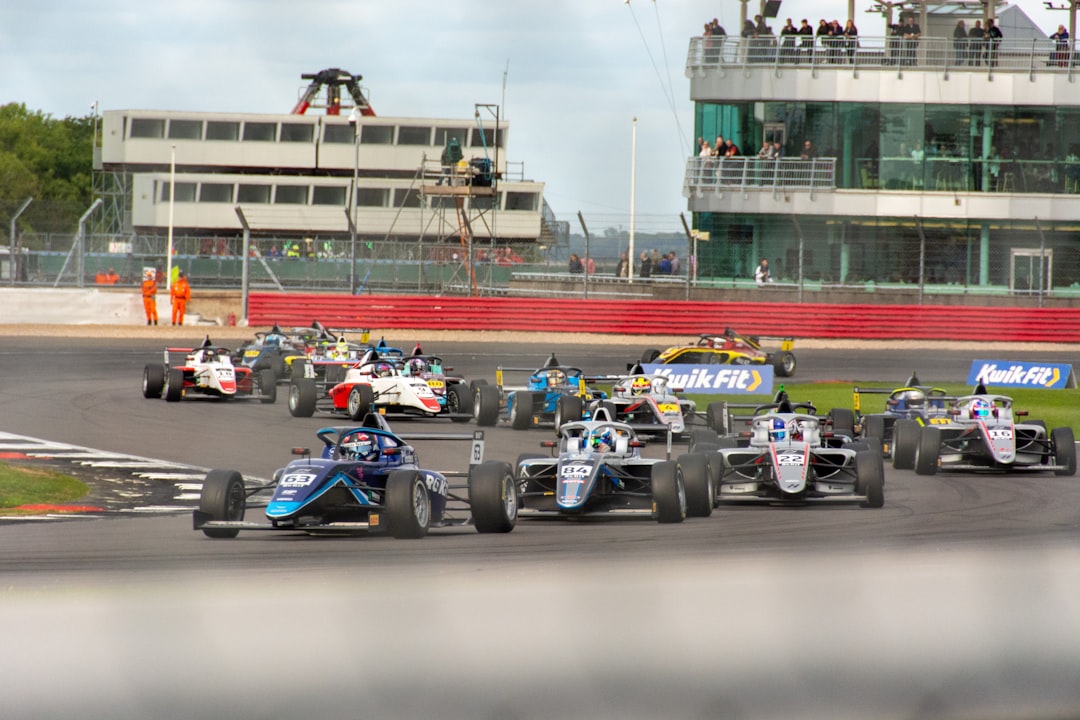Famous Racing Circuits: 10 Legendary Tracks to Experience 2025
Why Famous Racing Circuits Captivate Motorsport Fans Worldwide
Famous racing circuits are the sacred grounds where motorsport legends are born and automotive history unfolds at breakneck speeds. From the tree-lined straights of Spa-Francorchamps to the narrow streets of Monaco, these tracks have witnessed over a century of racing drama.
The evolution of racing circuits tells the story of motorsport itself. Early races took place on public roads between towns, with drivers navigating through villages and countryside at speeds that would terrify modern safety officials. The first purpose-built racing circuit, Brooklands in England, opened in 1907 with its distinctive banked concrete surface that allowed cars to reach unprecedented speeds.
Today’s circuits represent the pinnacle of engineering excellence, combining challenging layouts with cutting-edge safety technology. Modern track design considers everything from drainage systems that prevent aquaplaning to energy-absorbing barriers that can save lives during high-speed impacts. The result is venues that allow drivers to push harder than ever before while dramatically reducing the risks that once made motorsport a deadly pursuit.
The world’s most iconic racing circuits include:
• Nürburgring Nordschleife (Germany) – 20.8km of “Green Hell” with 154 corners
• Spa-Francorchamps (Belgium) – Home to the legendary Eau Rouge corner
• Circuit de Monaco (Monaco) – The crown jewel street circuit since 1929
• Circuit de la Sarthe (France) – Host of the 24 Hours of Le Mans since 1923
• Suzuka (Japan) – Unique figure-8 layout with 17 technical turns
• Mount Panorama (Australia) – 174m elevation change on public roads
• Silverstone (UK) – Former RAF airfield, first F1 World Championship venue
• Monza (Italy) – The “Temple of Speed” with 80% full-throttle racing
• Interlagos (Brazil) – 4.3km of passionate South American racing culture
• Laguna Seca (USA) – Famous for the blind Corkscrew corner
What makes a circuit truly famous? Historical significance, challenging layouts, and hosting prestigious events like Formula One, MotoGP, or endurance classics. As legendary driver Jackie Stewart once said about the Nürburgring: it’s “The Green Hell” – a nickname that perfectly captures how these venues test both man and machine to their absolute limits.
The psychological impact of these legendary venues cannot be understated. Drivers often speak about the intimidation factor of approaching corners like Eau Rouge for the first time, or the mental preparation required to tackle the Nordschleife’s 154 corners. These tracks separate good drivers from great ones, demanding not just technical skill but mental fortitude and an almost supernatural ability to read the road ahead.
These tracks aren’t just asphalt and barriers. They’re cultural landmarks that boost local economies, create jobs, and draw hundreds of thousands of fans annually. The Indianapolis Motor Speedway alone holds over 257,000 spectators, making it the world’s largest sports venue. The economic ripple effects extend far beyond race weekends, supporting everything from local hotels and restaurants to specialized automotive businesses that cater to racing enthusiasts.
Modern circuit design has also acceptd environmental responsibility. Many venues now incorporate solar power systems, rainwater collection, and sustainable building materials. Silverstone’s solar farm generates enough electricity to power the equivalent of 2,500 homes, proving that high-performance motorsport and environmental consciousness can coexist successfully.

The Hall of Fame: Famous Racing Circuits and What Makes Them Iconic

From the Nürburgring’s 20-km “Green Hell” to Monaco’s glamorous street canyon, only a handful of venues have turned into genuine motorsport shrines. Three qualities explain their magic:
• Technical brilliance – corners such as Eau Rouge, Suzuka’s 130R and Laguna Seca’s Corkscrew still make modern downforce monsters feel small.
• Rich history – Spa (1925), Le Mans (1923) and Monza (1922) have soaked up almost a century of triumphs and heartbreaks.
• Distinct personality – figure-8 layouts, mountain roads or glitzy harbours mean no two laps feel the same.
Add raw speed and the atmosphere becomes electric; an F1 car is full-throttle for 80 % of a Monza lap and touches 340 km/h, while IndyCars average over 370 km/h at Indianapolis.
| Circuit Type | Characteristics | Examples | Advantages |
|---|---|---|---|
| Permanent | Purpose-built facilities | Spa, Suzuka, Silverstone | Consistent surface, top-tier safety |
| Street | Everyday public roads | Monaco, Marina Bay | Urban spectacle, close-up viewing |
| Temporary | Pop-up layouts | Some airport/park events | Flexible, cost-effective |
Europe’s Icons (Snapshot)
• Nürburgring Nordschleife – 154 corners; open most evenings to the public.
• Spa-Francorchamps – 7 km of flowing Ardennes asphalt with Eau Rouge/Raidillon.
• Circuit de Monaco – 3.3 km, zero margin for error, pure prestige.
• Silverstone – former RAF base; Maggotts-Becketts aero torture test.
• Monza – “Temple of Speed”, where tifosi paint the podium Ferrari-red.
More info about Auto Racing News
Asia-Pacific Highlights
• Suzuka – figure-8, 17 corners, mythical 130R.
• Mount Panorama – 174 m elevation change on roads limited to 60 km/h the rest of the year.
• Shanghai International Circuit – 1.17 km straight, modern Tilke design.
• Marina Bay – F1’s original night race under 1 600 floodlights.
• Albert Park – lakeside season-opener that sets the F1 tone.
Scientific research on circuit tourism
Circuit Profiles: Layouts, Landmark Corners & Evolution

A handful of corners define an entire sport because they demand total trust in physics, the car and the driver.
Layout Legends (Why They Matter)
• Pouhon, Spa – 280 km/h, sustained g-load that roasts tyres and neck muscles.
• Mulsanne Straight, Le Mans – still 330 km/h between chicanes; endurance meets top speed.
• 130R, Suzuka – 130-m radius, nearly 300 km/h; minor lift, major bravery.
• Forrest’s Elbow, Bathurst – blind crest funnels you toward the wall before Conrod Straight.
• Raidillon, Spa – 40 m climb in two seconds; suspension compresses, then unloads hard.
• The Corkscrew, Laguna Seca – 18 m plunge in the blink of an eye; a paved cliff-edge.
Safety & Renovation Milestones
Modern science lets circuits stay thrilling yet safer: asphalt run-offs slow cars without digging them in, TecPro and SAFER barriers absorb up to 40 % more energy than Armco, and the FIA Halo reshaped cockpit design as well as marshal-post locations. Spa’s recent wider run-offs at Raidillon show how you can protect drivers while keeping the corner’s soul.
Global Impact: Economics, Culture & Safety Innovations
Famous racing circuits double as economic engines. Monaco GP week alone injects tens of millions of euros into the tiny principality, while Le Mans welcomes 250 000 spectators who camp, eat and shop in the Sarthe region. Melbourne’s Australian Grand Prix adds roughly AU$60 million to local GDP, and the Nürburgring supports hundreds of full-time jobs through year-round track days and tourism.

Sustainability now sits alongside spectacle: Silverstone’s solar farm powers 2 500 homes’ worth of electricity, many venues offer EV charging, and several have adopted carbon-neutral operations.
Motorsport Safety Revolution
Barrier tech has evolved from 1960s Armco to today’s energy-absorbing TecPro and SAFER walls. The HANS device has virtually eliminated fatal basilar-skull fractures, while on-site trauma rooms and helicopter pads put expert medical help just minutes away.
Cultural Festivals & Heritage
Goodwood Revival, the Bathurst 1000, the 24 Hours of Le Mans and Monaco GP week have become full-scale cultural festivals that preserve heritage, fuel STEM education and give local communities a shared identity.
More info about Iconic Race Car Liveries
How to Experience These Tracks Yourself

Standing on the same ribbon of asphalt as your heroes is unforgettable, and most legendary venues make that surprisingly easy.
Booking a Lap or Tour
• Track days – Drive Silverstone, Spa or Suzuka in your own or a rented car with instructor guidance.
• Nürburgring Touristenfahrten – Pay a toll (≈€30) and lap the Nordschleife during public-road sessions.
• Driving schools – Mount Panorama, Laguna Seca and others provide classroom theory, pro coaching and safety gear.
• Ride-along thrills – Let a seasoned pro hurl you through Parabolica or 130R at full chat.
Annual Must-See Events
Formula 1 brings global glamour to Monaco, Monza and Singapore; MotoGP showcases two-wheel artistry at Mugello and Phillip Island. Endurance classics such as Le Mans, the Spa 24 Hours and the Nürburgring 24 Hours run deep into the night, while Australia’s Bathurst 1000 turns Mount Panorama into a week-long national party.
Frequently Asked Questions about Famous Racing Circuits
Why are some circuits called “Temples of Speed”?
Tracks like Monza or Indianapolis prioritise pure velocity. An F1 car is flat-out for roughly 80 % of a Monza lap and IndyCars average 370 km/h for 500 miles, giving these venues an almost spiritual aura of speed.
What’s the difference between a street circuit and a temporary circuit?
Street circuits (Monaco, Mount Panorama) use public roads. Temporary circuits are built on non-road sites—airfields, parks—then dismantled after the event. Both differ from permanent facilities such as Silverstone or Spa.
Can visitors drive on the Nürburgring or Mount Panorama?
Yes. The Nordschleife operates as a toll road during Touristenfahrten sessions, and Mount Panorama is a 60 km/h public road outside race weekends. Dedicated driving experiences at both venues allow higher-speed, fully instructed laps.
Conclusion
Famous racing circuits are living museums, economic lifelines and laboratories for safety innovation. They prove that tradition and progress can coexist: Spa retains its soul after upgrades, and Bathurst still thrills despite stricter rules. Most importantly, they unite a global community of fans who share goosebumps each time a car rockets through Eau Rouge or the Corkscrew.
At Car News 4 You we’ll keep tracking the technology, culture and unforgettable moments these venues create—because this intersection of passion and innovation is exactly why we love cars.







